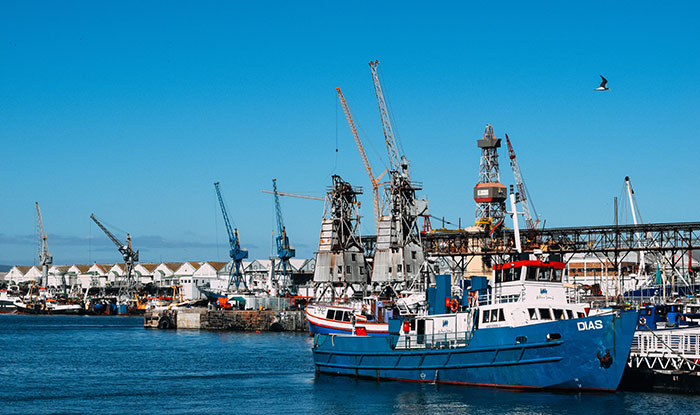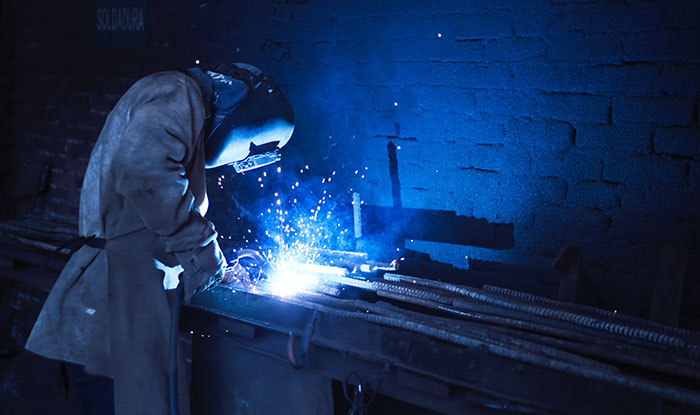Create a Safer Manufacturing Environment
Safety is a critical aspect of any manufacturing business. Whether your company is a small local supplier or a producer for a multinational conglomeration, the equipment and fast-paced atmosphere of manufacturing can lead to hazardous environments for employees. Managers, owners and employee leaders need to work to ensure that manufacturing facilities have the best possible safety standards. While many are legally mandated, such as the use of hard hats in certain areas or safeguards on specific machinery, others are more voluntary efforts that can help decrease the risks.
Speed and efficiency are critical to the financial success of factories. Paying attention to manufacturing safety guidelines and making small investments in improving them can help keep everyone healthy and on time, without any delays or workers' compensation costs.. Here are a few smart protocols that can help manufacturers improve employee safety.
Make Safety in Manufacturing Industry a Team Effort
Georgia's Manufacturing Extension Partnership, a safety programs for manufacturing companies from Georgia Tech's Enterprise Innovation Institute, suggested that employers listen to employee comments to help protect workers.. While businesses sometimes crowdsource innovative ideas about how to move the business forward with various groups. The best solution for employee problems to is to crowdsource with their own workers.
Crowdsourcing works great with safety. Employees know the regulations and specific tools that lead to the most accidents. Employers should discuss with workers what they think the safest and most cost-effective solutions may be to certain problems, because they may have the most insight.
Similarly, GaMEP recommended that manufacturing leaders employ a football-like team relationship with their employees to solve problems. As football has grown in popularity, so has many people's understanding of the framework of organizations. Employers can appoint safety leaders to act as coaches. These coaches can dole out specific responsibilities to various employees that suit their abilities, like team positions. Every so often these teams can huddle up for a few minutes to ensure that their factory features are safe. If they aren't, the team can draw up a new game plan for how to proceed and fix the problem.
Eliminate Slips, Trips and Falls
The WorkSAFE program, a safety initiative driven by the insurance company Missouri Employees Mutual, pointed to slips, trips and falls as the No. 1 cause of workplace injuries. Each injury from one of these accidents costs businesses an average of $28,000 – a total of $70 billion nationwide per year. Although not every one of these injuries is tied to the manufacturing industry, the environment makes it particularly susceptible to these types of injuries.
Manufacturing employers may want to take advantage of corporate shoe programs that allow employees to purchase nonslip work shoes and boots at reduced prices. Slip-resistant shoes can help employees reduce their likelihood of slipping and falling. Many factories use chemicals that can create slippery floors when spilled. This makes partnering with an industrial safety shoe supplier particularly important to people in these industries.
Install A Factory Safety Officer
Having an employee who is dedicated to the safety of a factory is one of the best ways to ensure safety throughout the plant, workers' compensation expert and Amaxx Risks Solutions president Rebecca Shafer explained. Factory safety officers' responsibilities should include performing hazard analysis on every position, providing training and testing for each employee, holding educational courses on safety throughout employment, inspecting employee appearance for safety, ensuring proper use of machines and keeping up with maintenance on all machinery throughout the factory.
Safety officers aren't just a great defense against injury. They can also help keep your company up to the standards required by the government and insurers.
Employees and Your Bottom line.
Don't Forget To Share This Post!

Top 10 Loading Dock Safety Tips
Loading dock areas are notorious for their numerous safety hazards. Sidestep risk to your workers by following these 10 loading dock safety tips.

Keep Safe While Working In a Metal Shop
Being aware of the common injuries associated with working in a metal or machine shop is critical. Here are the most common hazards and safety tips.

Think About Safety In The Wood Shop
Whether you're a manager, craftsman or new employee, here are 4 important and unexpected hazards to safety in the wood shop, regardless of size.